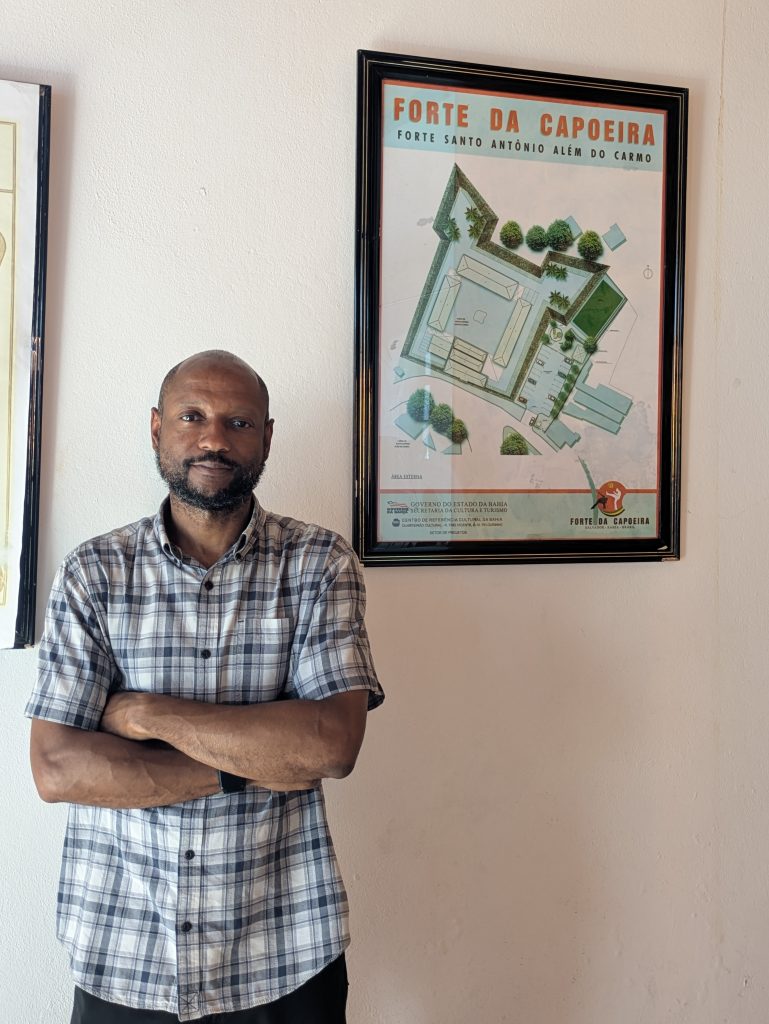I have been thinking about the dichotomization of Capoeira into the luta (fight) and the jogo (game) and the implications of this to the teaching of Capoeira. While this dichotomy is does capture broad contours of the art, there are nuances, dimensions within these that I fear are not fully explicated therein.
As stated, the jogo is the game of Capoeira, however there are different types of games. I am reminded of games that I saw in my early days in Capoeira with groups that played at high speeds, employed many acrobatic floreiros, but also played so far apart that neither person’s attack necessarily required a defensive response from the other player, that is they were too far from each other for their strikes to connect, thus reducing the game to a very animated but inert visual spectacle.
This was quite different from other games that I saw where everything was close and low to the ground. Strategy was valued over floreiro, and one had to maintain awareness over one’s position in time and space relative to one’s adversary. I also saw and participated in games that defied these supposed binaries.
These encounters taught me that the game is not one-dimensional and can be played with different types of intentionality, such as dazzling onlookers, cultivating a mindfulness of the body, employing strategy, et cetera.
The luta or the fight is another matter, one that I argue is closely related to the game depending on how one enters into it. In my first 12 years in Capoeira I was constantly searching for the martial approaches to the art. What attracted me to it was that it was African in origin, but I was continually frustrated by what I felt was an inattention to how one would apply it in self-defense, such as how one would defend against a knife attack, how one would fend off a grappler, how one would beat back a horde of flesh-eating Zombies in a post-apocalyptic urban wasteland, et cetera (of course that last one is offered in jest). At any rate, I felt that there was a chasm in the lore of Capoeira’s potency as a combat art (which is attested to in the historical record) and how it is taught today. In fact, my conversations with Dr. Edward Powe, who studied in Bahia under Mestre Pastinha in the 1960s, have affirmed that even in the mid-20th Century, the art was still taught as a martial discipline, rather than strictly as a cunning game. This is not to suggest that such deficits are universal in the present context. My first teacher, Tebogo Schultz, gave me a solid foundation in the art reflective of his confidence in Capoeira as a comprehensive tool. Nor is this to suggest that the game itself is fundamentally divorced from the self-defense aspect of the art, rather that explicit discussion of the latter is often absent.
One of the things that I have gained from my studies with Mestre Preto Velho, is an understanding that such knowledge has not been abandoned, as he has been keen to note the importance of the Capoeira of Rio de Janeiro (including his teacher Mestre Touro) in preserving such combative traditions. He has also emphasized something that I have seen eschewed by many exponents of Capoeira as a combat art. Whereas their “combat” Capoeira has taken the form of a kickboxing-grappling art—something that resembles Capoeira perhaps only nominally, Mestre Preto Velho has proposed an approach that reflects Mestre Pastinha’s assertion from decades before that “Capoeira is perfect in itself and has no need for additions or modifications.” Suggesting that what has been missing has been an understanding of the art’s fundamentals and their applications. And while some selective adaptation of the art may be necessary as one applies the art to various combative situations, its underlying principles remain constant. In fact, Mestre Preto Velho has stated,“The tradition has been adaptability.”
It is in this vein that the jogo and luta converge, as the game becomes a means to refine certain technical and philosophical principles, principles that are indelible to the fight.
